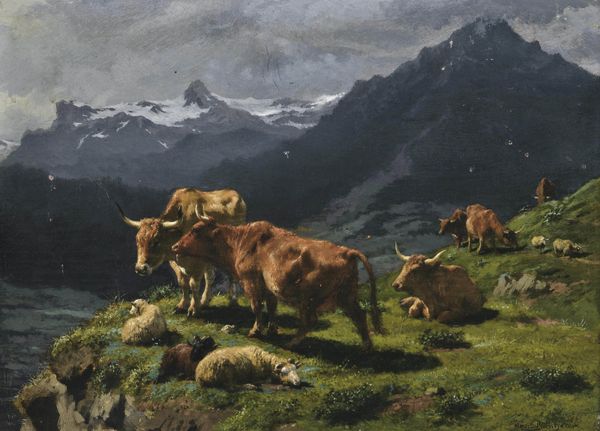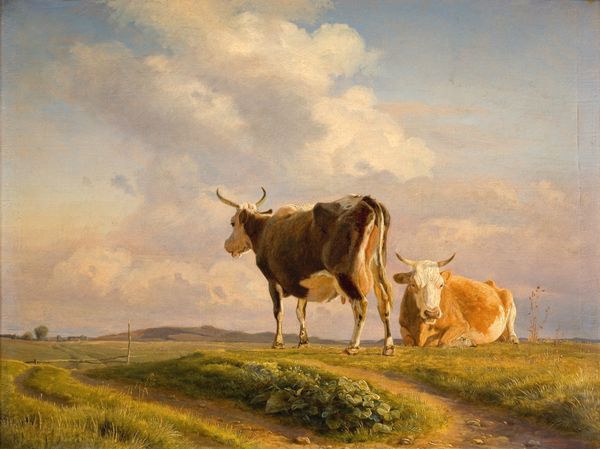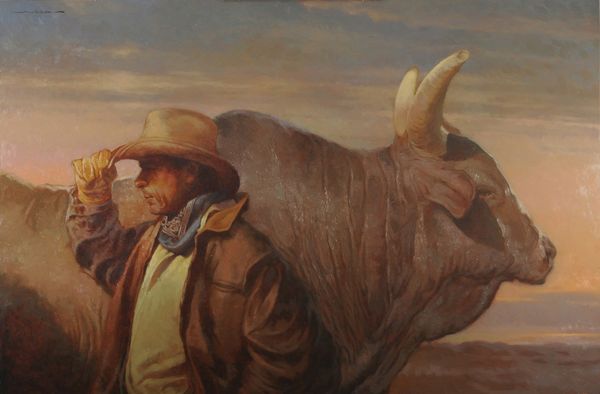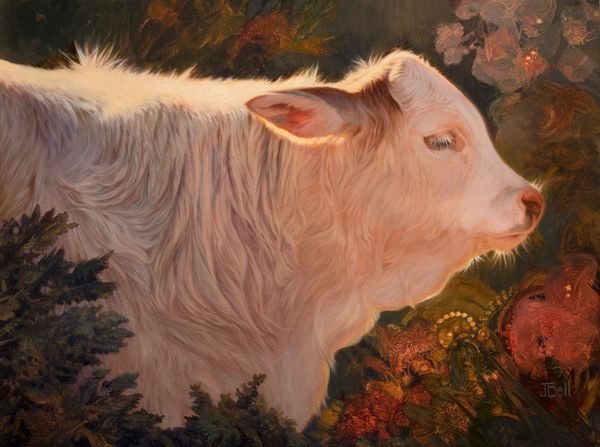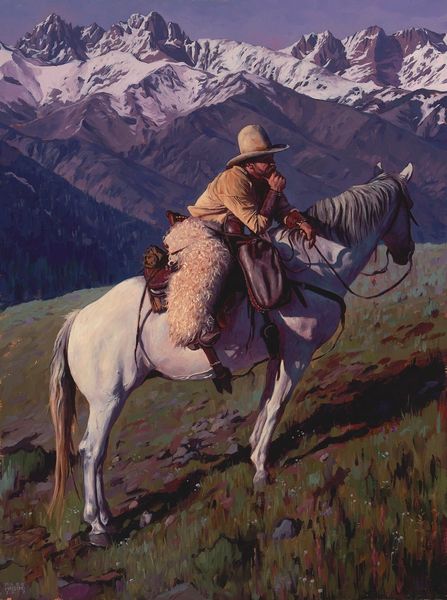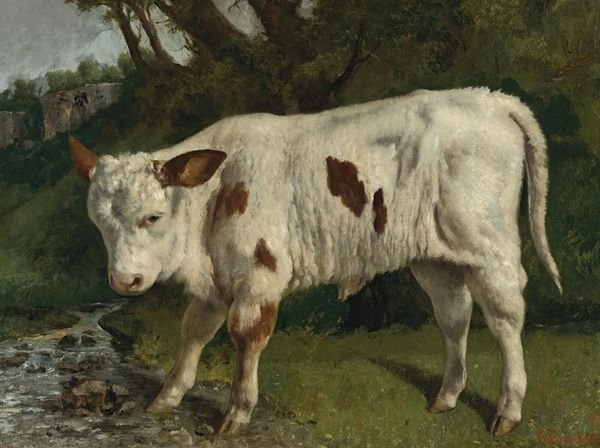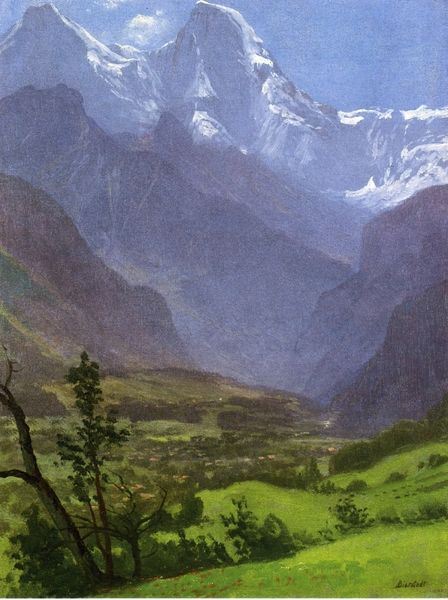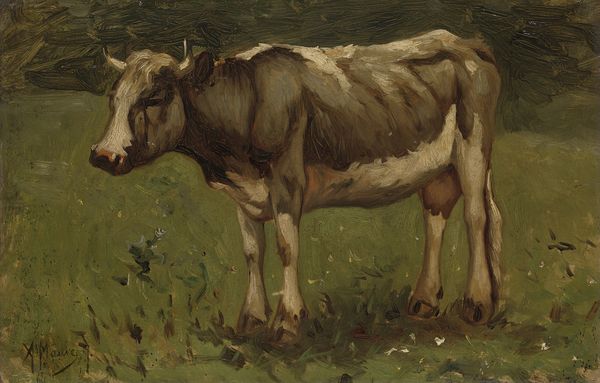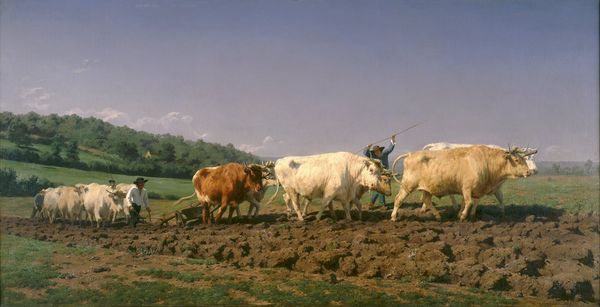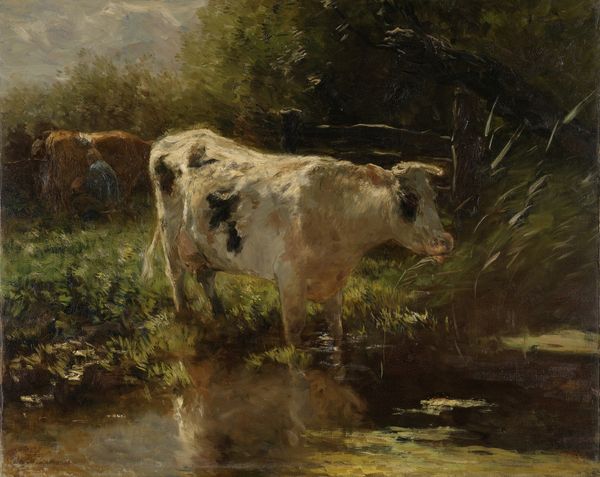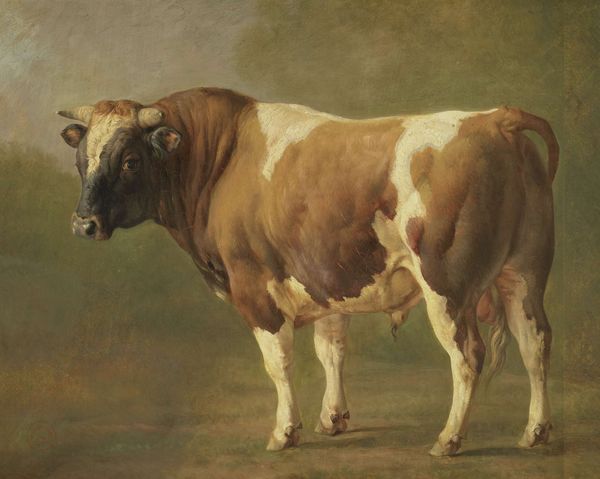
Copyright: Public domain
Eugène Burnand’s painting, “Bull in the Alps,” would have been made with oil paints. The artist carefully applied many thin layers of pigment to create a sense of depth, and to capture the unique textures of the bull's fur, the rough terrain, and the distant mountains. Burnand’s choice to portray such a pastoral subject connects to broader social issues of his time. The rise of industrialization led many artists to idealize rural life, and to depict the beauty and simplicity of the natural world. This was in contrast to the increasingly mechanized and urbanized world. The painting romanticizes agricultural labor and highlights the importance of animals in traditional farming practices. By emphasizing the physicality and presence of the bull, Burnand reminds us of the labor and resources required to sustain human life, and invites us to reconsider our relationship with the natural world. In this way, "Bull in the Alps" is more than just a pretty picture. It’s a statement about the value of traditional ways of life.
Comments
No comments
Be the first to comment and join the conversation on the ultimate creative platform.
